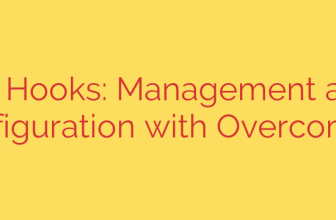
Urgent Security Alert: Clop Ransomware Exploits New Zero-Day in Oracle E-Business Suite
The notorious cybercrime group behind the Clop ransomware is actively exploiting a new, unpatched zero-day vulnerability in Oracle’s E-Business Suite (EBS), a widely used platform for managing global business operations. This high-severity threat places organizations, particularly in the financial sector, at immediate risk of data theft and devastating ransomware attacks.
This campaign highlights the group’s sophisticated strategy of targeting critical enterprise software with unpatched flaws to gain widespread access to sensitive corporate data.
The Threat: A New Vulnerability in a Critical System
Security researchers have identified a campaign targeting Oracle’s E-Business Suite, specifically focusing on the Web Applications Desktop Integrator (Web ADI) module. The attackers, tracked as TA505 (also known as UNC4990), have a well-documented history of leveraging zero-day vulnerabilities in popular enterprise software, as seen in the massive MOVEit Transfer and GoAnywhere MFT breaches.
Key details of the current threat include:
- The Target: Oracle E-Business Suite, a comprehensive suite of applications that handles critical processes like enterprise resource planning (ERP), customer relationship management (CRM), and supply-chain management (SCM). Its central role makes it a high-value target for attackers.
- The Vulnerability: The exploit targets a previously unknown (zero-day) vulnerability within the Web ADI component of EBS. This is not the same as the previously patched vulnerability (CVE-2023-21931) addressed in Oracle’s April 2023 Critical Patch Update, meaning even recently patched systems are at risk.
- The Attack Method: The vulnerability allows attackers to execute arbitrary SQL queries against the Oracle EBS database. This provides them with deep, unauthorized access to the underlying data, enabling them to exfiltrate sensitive information before deploying ransomware.
How the Attack Unfolds
The attack chain is ruthlessly efficient. By exploiting the flaw in the publicly accessible Web ADI interface, attackers can bypass standard security controls to interact directly with the database.
Once they gain this initial foothold, their primary objectives are:
- Data Exfiltration: The group first focuses on stealing massive amounts of confidential data. This can include financial records, employee information, customer lists, and proprietary intellectual property.
- Ransomware Deployment: After exfiltrating the data, the attackers deploy Clop ransomware to encrypt the victim’s systems, grinding business operations to a halt.
- Double Extortion: With the data stolen and the systems encrypted, the attackers engage in a double-extortion tactic. They demand one ransom payment to provide a decryption key and a second payment to prevent the public release of the stolen data.
This strategy maximizes pressure on victim organizations, forcing them to consider paying exorbitant ransoms to avoid both operational downtime and severe reputational damage from a public data leak.
Actionable Steps to Mitigate Your Risk
Since this is a zero-day vulnerability, a patch is not yet available from Oracle. Organizations must therefore take immediate, proactive steps to defend their systems. Waiting for an official patch is not a viable strategy.
Follow these critical security recommendations immediately:
- Restrict Internet Exposure: Your Oracle E-Business Suite should not be directly accessible from the public internet if at all possible. Place it behind a VPN or enforce strict IP address whitelisting to ensure only authorized users and systems can reach it.
- Implement a Web Application Firewall (WAF): A properly configured WAF can help detect and block malicious SQL queries and other web-based attacks targeting the Web ADI module. Configure rules specifically to monitor for unusual patterns targeting your EBS environment.
- Monitor for Indicators of Compromise (IOCs): Security teams must actively hunt for signs of an attack. Scrutinize server logs for unusual or suspicious SQL queries, especially those originating from the Web ADI component. Monitor for unexpected outbound network traffic from EBS servers, which could indicate data exfiltration.
- Apply All Existing Patches: While this specific vulnerability is unpatched, ensure your Oracle E-Business Suite is fully up-to-date with all previous Critical Patch Updates (CPUs). A hardened system with fewer known vulnerabilities is more resilient against multi-stage attacks.
- Enforce Network Segmentation: Isolate your Oracle EBS environment from other parts of your corporate network. This practice, known as network segmentation, can prevent attackers from moving laterally across your infrastructure if a breach does occur, limiting the overall damage.
- Maintain and Test Backups: In the event of a successful ransomware attack, your last line of defense is a reliable backup. Ensure you have recent, immutable, and offline backups of your critical data and that you have tested your recovery procedures.
The threat from sophisticated groups like TA505 is persistent and evolving. This latest campaign is a stark reminder that even well-maintained enterprise systems can fall victim to zero-day exploits. Organizations using Oracle E-Business Suite must act now to review their security posture, limit their attack surface, and actively monitor for any signs of compromise.
Source: https://go.theregister.com/feed/www.theregister.com/2025/10/06/clop_oracle_ebs_zeroday/








